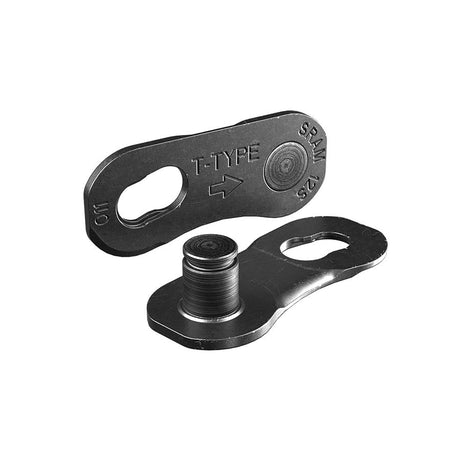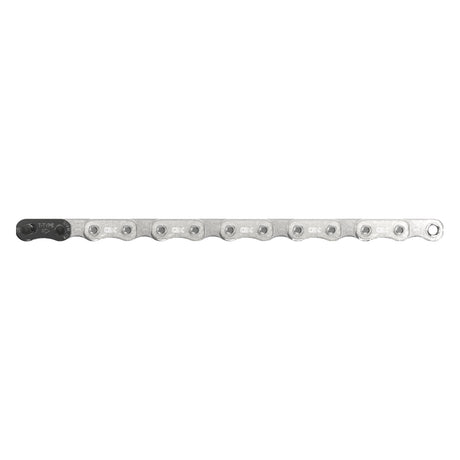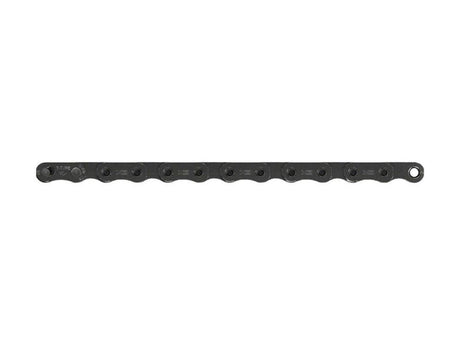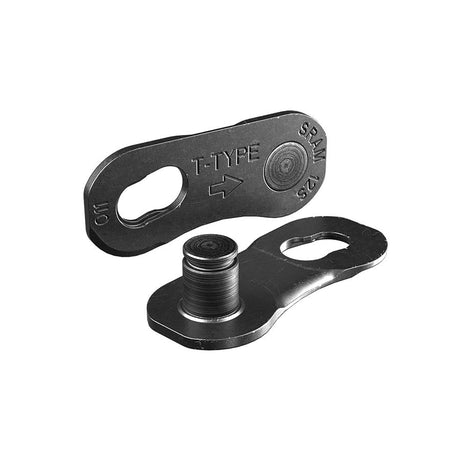Intro
SRAM loves to redefine mountain bike drivetrains with every release. They started with bringing 1x drivetrains to the mainstream, then they introduced wireless shifting with their AXS systems. They are continuing that steady march forward by eliminating the derailleur hanger and slapping the derailleur directly on the frame. They did the unthinkable with their new X0 Transmission and XX Transmission. There are tons of advantages to this, like being able to ditch all the adjustments on the derailleur and being a much stronger package.
If you’re interested in all the tech behind the scenes of how this stuff works, check out our SRAM AXS Transmission tech blog post, if you're interested in weights on the new T-Type Eagle AXS, we also have an article on that, because in this article, we’ll be focusing on how these new transmissions affect us in the real world.
We’ve been riding these X0 and XX transmissions for about a month now in some sloppy PNW conditions, and we’re stoked to tell you all about them.
Installation
First off, let’s talk about how easy the installation is, which is truly a one of a kind install and setup process.
We’re honestly stoked for the average rider that has a tough time adjusting their derailleur or performing the initial setup on a new derailleur at home. There’s a lot of home mechanics that have a tricky time adjusting their shifting despite being able to do things like service their fork lowers and bleed their brakes, simply due to the finicky nature of derailleur adjustments.
We also think that the entire mentality and design around the installation alone is a game-changing feature for mountain bike drivetrains.
A system that doesn’t need adjustment screws, and is nearly fully adjusted by design, is pretty freaking cool. All you need to adjust is the Setup Key that you can find in the SRAM app which takes care of your b-tension. Your limits will always be perfectly adjusted because the derailleur will always be aligned with the cassette now that it’s mounted directly to the frame!
Performance
Now let’s talk about how this stuff performs on the trail.
Mike has been riding the XX transmission and Tor’s been on the X0 Groupset, and both produce an extremely crisp, quiet and smooth shift from gear to gear just in the parking lot after installation, and it got even better once you hit the trails.
Climbing
Mike played around with shifting under increased amounts of load on a fire road climb. First, he would shift under a casual cadence, but then mash as hard as he could while shifting. It did actually shift more crisp and more quiet under the heavier load. That smooth shifting under load translated a seamless power transfer while pedaling over tricky singletrack climbs, since the reduction of any type of clunkiness kept the traction very consistent. This is going to be pretty sweet on e-bikes where you are definitely pedaling pretty hard with the help of the motor, and you’re not really able to let up on the power to ease into the shifts. Not only is the power transfer super smooth from the derailleur, chain and cassette interface, but it's also a more smooth transition in between gears due to the updated gearing ramps.
Previous Eagle cassettes had a big jump between their largest climbing gears of 42t to 52t. T-Type addresses this and goes from a 44t to the 52t, which seems like a tiny change, but is super noticeable on trail. They’ve also updated the third gear, increasing it from a 36t to a 38t, and left the other 10 cogs the same as the previous Eagle cassette. These changes definitely seem small on paper but the jumps between gears across the cassette are now far more uniform rather than being more dramatic in the easier gears. This seemingly incremental change definitely makes a noticeable difference in traction and the overall shifting experience.
Descending
When you reach the top of the climb and start descending, you will notice that the stronger clutch is pretty quiet. This is especially apparent through rough chattery sections, and we think that everyone is going to be super happy with this feature alone. Everyone likes a nice quiet bike, and this is a quiet drivetrain. Both Mike and Tor have the new RockShox suspension on our bikes which is the quietest suspension we’ve tried, so pairing that with the beefed up clutch makes for a seriously silent bike! The clutch on the previous AXS derailleurs left a bit to be desired when compared to the cabled versions, and this updated T-Type clutch brings it right in line with those quieter cabled derailleurs.
Tor smashed his derailleur extremely hard and it somehow doesn’t have a scratch on it. He hit a stump square on with with his derailleur going way too fast. The impact knocked him off his bike into a spiral down the trail. We can guarantee that any derailleur mounted on a hanger would have gotten ripped off 10/10 times, but this T-Type derailleur didn’t even have a scratch on it. Plus, even if it did break or scratch, we could pop in a fresh skid plate or entire cage to bring it back to showroom specs.
Last but not least, Mike really liked the adjustability and overall feel of the new shifter remote pod, and thought the buttons had a nice positive feedback. He thinks it feels a little more crisp than the original shifter remote. Tor prefers the button feeling and location on the previous AXS shifter and would run that on his personal bike. Lucky for him, the shifter pod is the only T-Type component that is backwards compatible with previous AXS, and the previous shifter is the only component that is forwards compatible with the T-Type components!
Comparison To Original SRAM AXS
So how does this new T-Type AXS compare to the original AXS?
Well, Mike was curious and went out to test the two back to back up a little hill climb. What we learned is that the T-Type system does shift a little more crisp and quietly. Further, it definitely shifts better the more load you push into the pedals, which isn’t true with original AXS, or any drivetrain for that matter. Original AXS feels like it shifts about the same no matter how much wattage you’re pumping into the cottage. Ultimately, we learned how freaking good the original AXS shifts. Sure, the new stuff shifts a bit better, but we were quite surprised at how well the original version shifts under load.
The decreased noise, ease of setup, and smoother jumps between climbing cogs are all just very nice touches with the T-Type system as well. Also worth mentioning is that Mike’s original XX1 AXS derailleur has been on his bike for almost 4 years now, with countless hours in the Whistler bike park. Despite being visibly smashed and scarred, it’s still straight as an arrow. If the old AXS derailleur can handle that kind of abuse and T-Type version is even stronger, we can only imagine how it’ll hold up in the long term.
Short Comings
So obviously we like this stuff, but what don’t we like? Personally, Mike is hoping for an oval chainring as his brain and knees get along better with those, but those might take some time to show up due to the new 8-bolt chainring compatibility.
While you definitely don’t have to charge the battery every ride, the battery life is a bit shorter because it has to fight against that stronger clutch so it won’t last quite as long as on previous AXS derailleurs. We think this is well worth it for a quieter ride.
Another con is that these new transmissions are only compatible with UDH frames. To test out this new T-Type stuff, Mike actually had to build an entire new bike since his beloved Devinci Spartan doesn’t use a UDH. This is obviously not directly relatable to the average rider in this specific scenario, but if you do really want this new technology, it just straight up won’t work with a non-UDH frame.
Summary
To sum up our review, here are our key takeaways.
Is the new SRAM transmission a true game changer? We think so!
Without a derailleur hanger, Tor has personally stress tested the full mount derailleur in the field, and can confirm that it is at least as strong as SRAM says.
Plus, building off of the “shifting better the harder you pedal” idealism is an amazing way forward since people are going to be riding harder and harder as time goes on. The installation and setup procedure is an industry shake-up when it comes to mountain bike drivetrains because there is truly nothing like it. SRAM did the unthinkable and got rid of those finicky little adjustment screws that most people don’t love.
The new T-Type AXS shifts are more crisp in all situations, it’s stronger, installs extremely easy, is quieter on descents, and is somehow cheaper than previous AXS. If you have a frame with UDH and are replacing your drivetrain or are doing a new build, it’s obvious that T-Type AXS is the way to go. If your original AXS works just fine and you’re happy with it’s performance, we don’t think you need to rush to our website to buy the new stuff.
If however, you want your shifting to be just a bit more crispy, have a smoother jump between climbing cogs, have a physically more robust drivetrain, have a quieter bike while descending, and like the simplicity of it, then this new AXS transmission is going to be a worthwhile upgrade to your mountain bike.
Last but not least, we should also mention that yes, these transmissions are actually cheaper than the previous AXS drivetrains! The X0 transmission costs $135 less than an X01 drivetrain, coming in at $1599. And the XX transmission costs $100 less than an XX1 drivetrain, costing $2049. The XX SL is another level above these two with more carbon fiber, and comes in at $2199.
Because these transmissions require T-Type components front to back, these kits come with everything you need, including a shifter pod, crankset, chainring, chain, cassette, derailleur, battery, and a battery charger.
Pros
-
Streamlined installation
-
More natural gear spacing
-
Shifting under load allows for shifts anywhere on trail
-
Stronger clutch makes for a quieter bike
-
Robust enough to shrug off big hits
-
Cheaper than previous AXS
Cons
- Slightly shorter battery life
- Only works with UDH frames
So SRAM AXS Transmissions perform better, costs less, and is way easier to install? Seems like SRAM has crushed it with these new transmissions, and we’re huge fans of them here at The Lost Co.
They’ve backed up their pretty extraordinary claims with some real world performance that is great for any enthusiast or racer that’s looking for the best transmission they can get their hands on.





